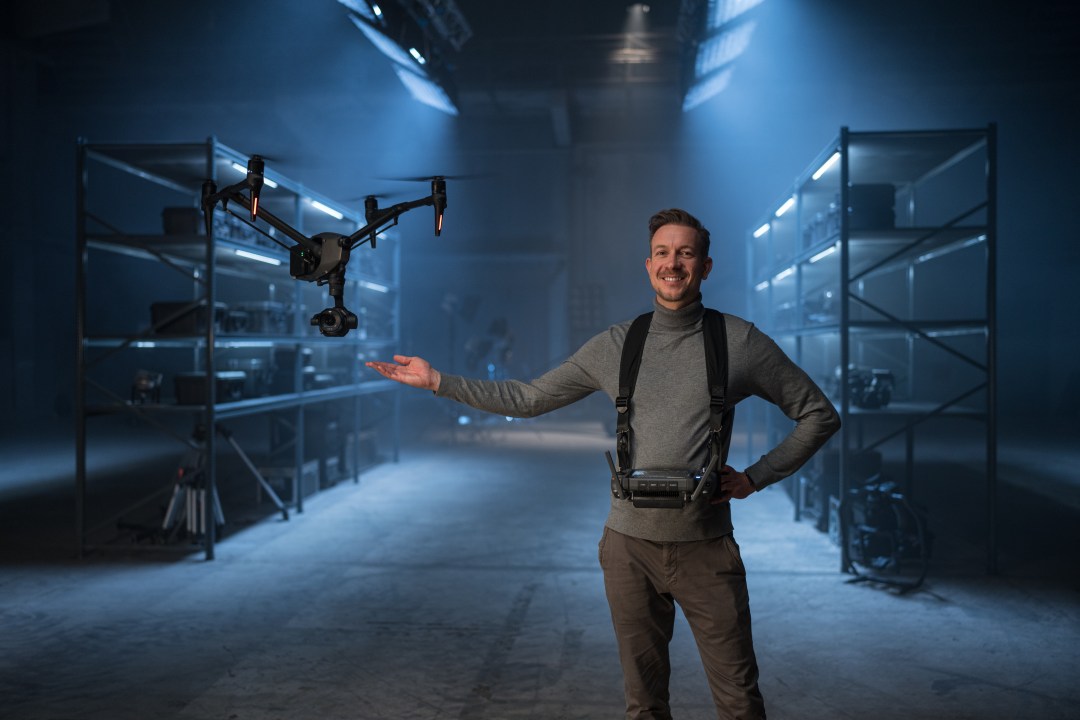Stuff Meets…Ferdinand Wolf from DJI
The pro pilot on humble beginnings, working with Top Gun 2’s Director of Photography and developing the Inspire 3

Ferdinand Wolf has a dream job. Travelling the world, flying drones for major TV series, Hollywood films and clients like Tesla. He’s also a jolly nice chap as we found out when we spent some time talking to him about his career.
From taking his first dronie aged 10, to becoming an early drone influencer. And then graduating to being a professional pilot and DJI Europe’s Creative Director…
I started building and piloting RC helicopters at the age of 10
I started very early with RC and I even still have some of my first aerial photography. Guess I must have been one of the first people to attach a disposable camera to my RC helicopter and take a dronie! That photo of me still exists and the one after is of a crashed helicopter…
I was fascinated by flying anything remotely and attaching a camera blew my mind. And I remember the day I saw the first video of drones with cameras attached. I was so hyped that I couldn’t sleep for two days. My career has been a natural progression. I studied IT, became a professional photographer, then with the drones all three things just came together.
Photography knowledge is important as a drone pilot
I was a professional photographer for 10 years, working as a wedding photographer, as well as a commercial photographer. Wedding photography was good training as you have to get the right shot. And having a good background in artistic photography. Knowing what ISO, aperture and shutter speed to use, as well as which lens to use certainly helped me.
The DJI Mavic 3 Pro has three cameras – wide, telephoto and super telephoto. You need to understand when to use what. When I’m working at a high level for Hollywood DPs, with credits such as Top Gun 2 to their name, they expect that you know the camera. They expect that you are of a level where you know the shutter speed required for example. It’s not even discussed.
I keep calm under intense pressure
The amount of pressure depends on the production. But when you get to a high level everyone on set, as well as the client and director of photography, is watching what you do. Most shots need you to be super precise, which comes with experience and routine – something I’ve learnt over the years.
I flew a drone live on ABC Good Morning America, where there was absolutely no room for mistakes, as it was streamed live to millions of viewers. The more pressure there is, the calmer I get. I go into my own world and don’t let it touch me. It’s important to keep calm.
A high five from a director means a lot
There are so many variables and external factors involved that can’t be controlled when you’re flying drones professionally. The biggest risk obviously being if you crash – there’s no room for error. If you nail the shot and the director gives you a high five it’s very rewarding though.
I’ve been working as the drone pilot for an upcoming major AppleTV+ show called Constellation, directed by Michelle MacLaren, who also directed Breaking Bad. She was demanding but I got a high-five after I got the shot – these are the moments I live for.
Travelling is one of the worst parts of my job
I’ve been to 70 countries for work so far and often in extreme environments. For example, for a film, I was piloting in 30 degree heat in Morocco and then we had to head straight to Finland in -30 degrees. Not only do you have to work and understand the script, you have to get all your equipment there and your team too.
You could say I was DJI’s earliest influencer…
I have been using DJI products since the beginning. I looked at the market back then and thought DJI was the best but also saw some ways their drones could be improved. So I shared my suggestions and also my work with them and I suppose became an early influencer. DJI then invited me to China in 2014 to test the prototype of the Inspire 1. They realised that not only could I fly the drones but take professional photos and understand the tech.
I was involved from the beginning with Inspire 2, which had a lot of advancements over it’s predecessor and became a standard for film productions. DJI then hired me. With Inspire 3, I was very involved in the drone’s development. It took 7 years since I submitted my blueprint of what I wanted to see for the drone to be released. The feedback for Inspire 3 has been amazing. Back in 2014 you had to really know what you were doing to carry pro cameras on drones and it was dangerous – Inspire 3 simplifies complex technology for everyone – it’s simple, reliable, and easy to set up, yet offers a pro level camera with interchangeable lenses.
Most people know me from the viral Tesla video I shot, flying through Giga Berlin
This was a really cool job I did for Tesla, who wanted a fly-through of the Giga factory in Berlin, documenting the whole Tesla production process. I think what people love about it, and why it went viral, is that you actually get to fly through the factory with people working it in. It gave people a look into something that hadn’t yet been seen – I like the bit with the robotic arms best!
